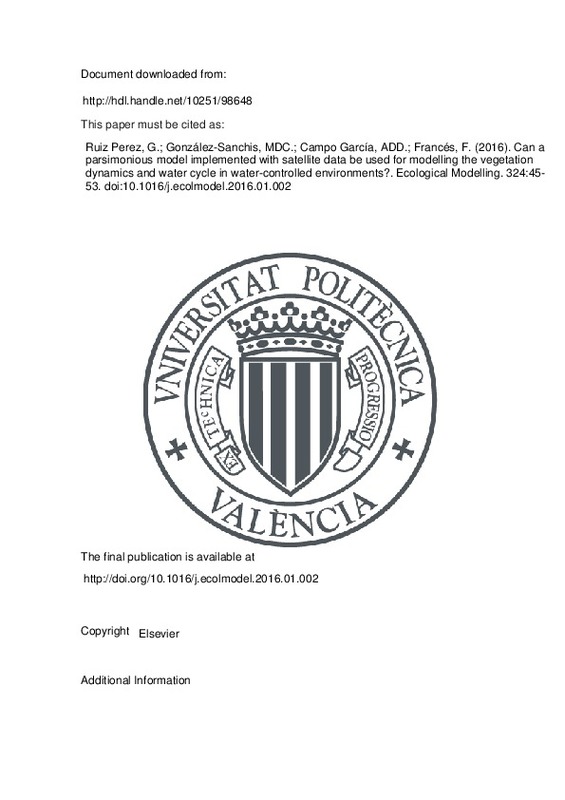JavaScript is disabled for your browser. Some features of this site may not work without it.
Buscar en RiuNet
Listar
Mi cuenta
Estadísticas
Ayuda RiuNet
Admin. UPV
Can a parsimonious model implemented with satellite data be used for modelling the vegetation dynamics and water cycle in water-controlled environments?
Mostrar el registro completo del ítem
Ruiz Pérez, G.; González-Sanchis, MDC.; Campo García, ADD.; Francés, F. (2016). Can a parsimonious model implemented with satellite data be used for modelling the vegetation dynamics and water cycle in water-controlled environments?. Ecological Modelling. 324:45-53. https://doi.org/10.1016/j.ecolmodel.2016.01.002
Por favor, use este identificador para citar o enlazar este ítem: http://hdl.handle.net/10251/98648
Ficheros en el ítem
Metadatos del ítem
| Título: | Can a parsimonious model implemented with satellite data be used for modelling the vegetation dynamics and water cycle in water-controlled environments? | |||
| Autor: | Ruiz Pérez, Guiomar | |||
| Entidad UPV: |
|
|||
| Fecha difusión: |
|
|||
| Resumen: |
[EN] Vegetation plays a key role in catchment's water balance, particularly in semi-arid regions that are generally water-controlled ecosystems. Nowadays, many of the available dynamic vegetation models are quite complex ...[+]
|
|||
| Palabras clave: |
|
|||
| Derechos de uso: | Reconocimiento - No comercial - Sin obra derivada (by-nc-nd) | |||
| Fuente: |
|
|||
| DOI: |
|
|||
| Editorial: |
|
|||
| Versión del editor: | http://doi.org/10.1016/j.ecolmodel.2016.01.002 | |||
| Código del Proyecto: |
|
|||
| Agradecimientos: |
The research leading to these results has received funding from the Spanish Ministry of Economy and Competitiveness and FEDER funds, through the research projects INTEGRA (CGL2011-28776-C02) and E-HIDROMED (CGL2014-58127-C3). ...[+]
|
|||
| Tipo: |
|







![[Cerrado]](/themes/UPV/images/candado.png)


